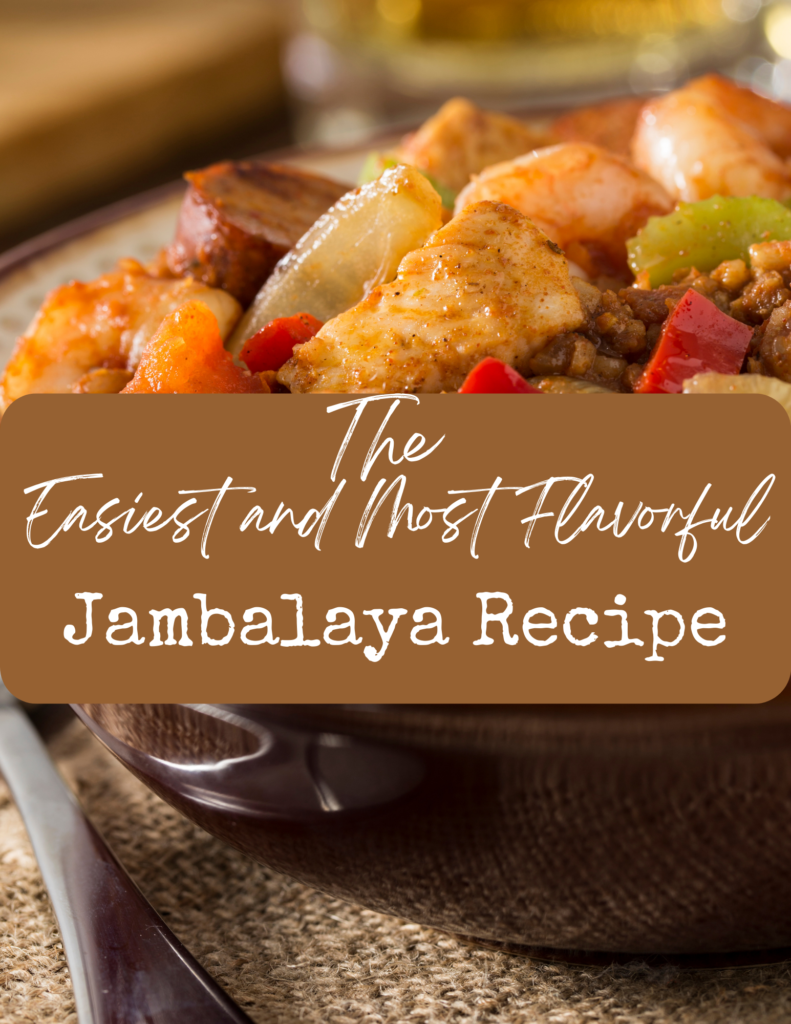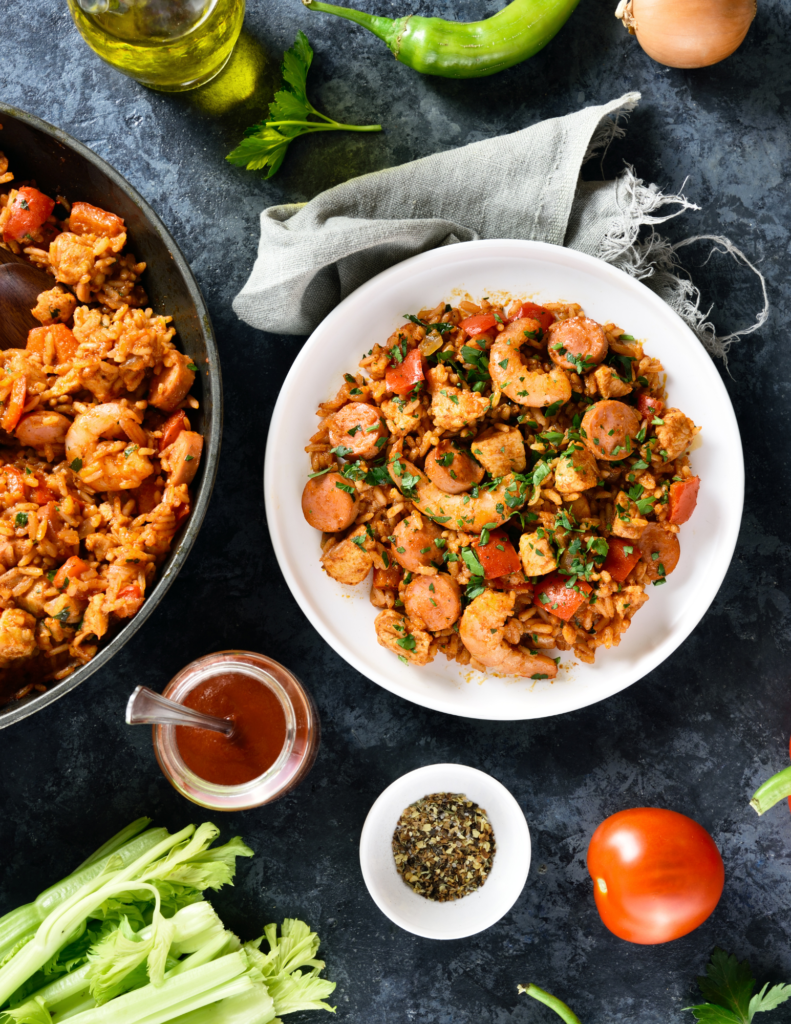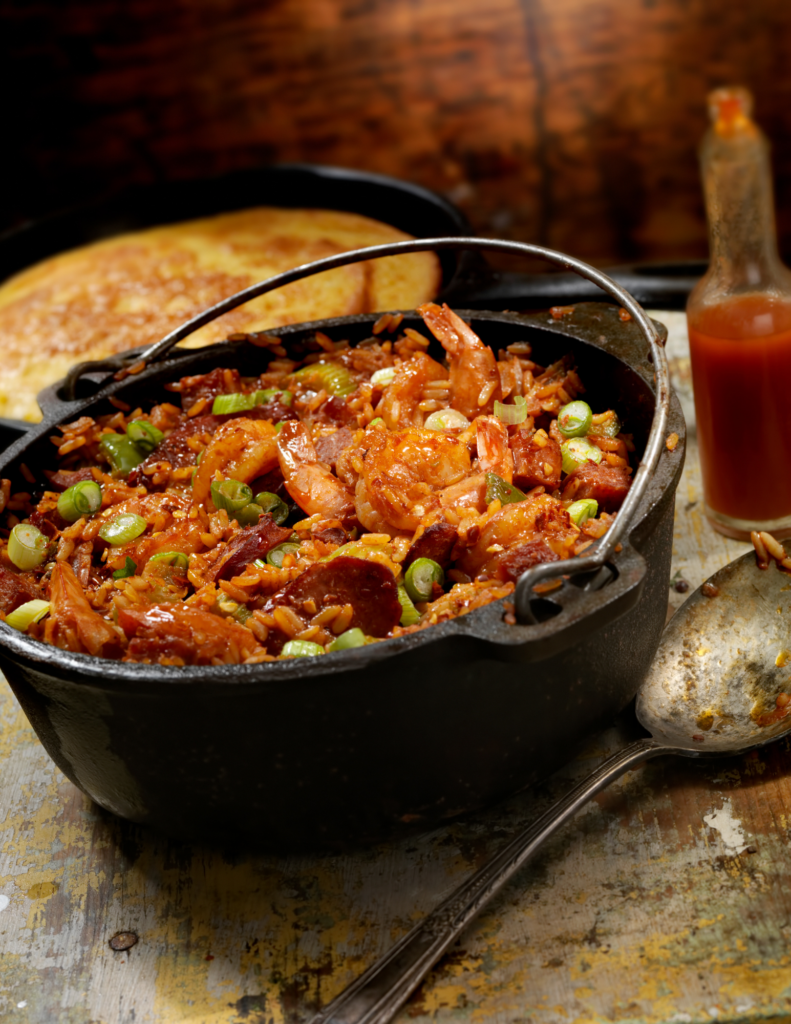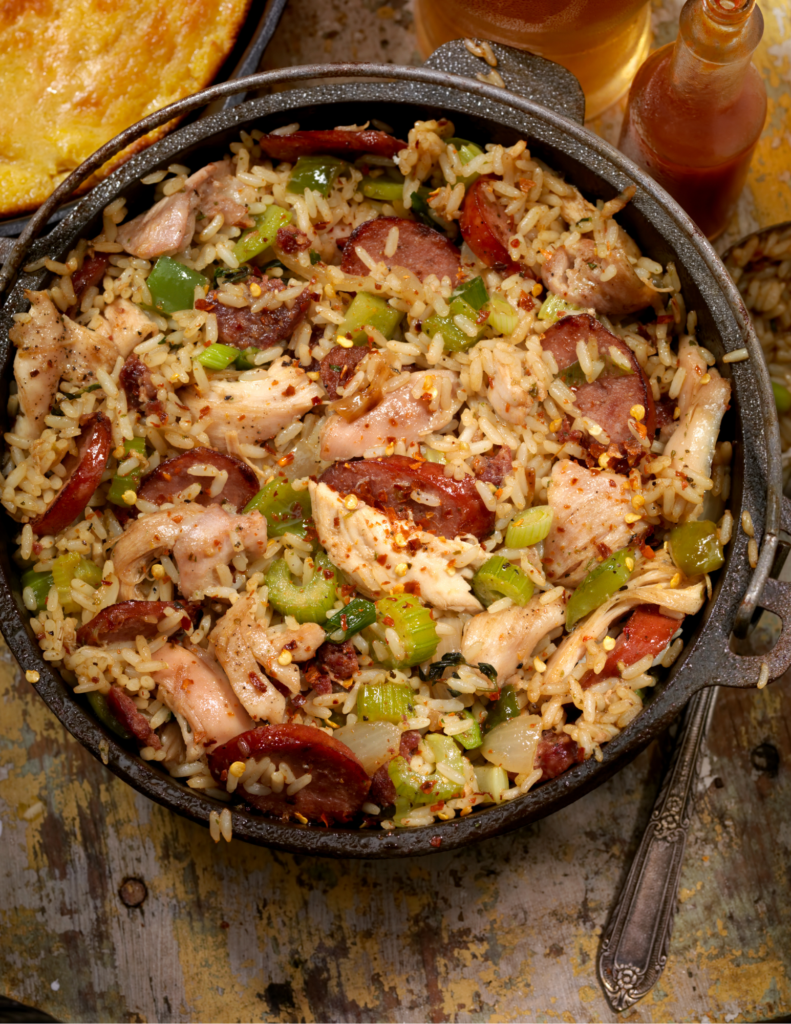
One-Pot Jambalaya is one of my many trademark dishes that just comes to kick ass for many reasons. I love that I can make something out of nothing. There are so many things that this dish will fulfill, and make lots of people happy. I have a few other one-pot dishes here on the blog that works for any busy mama such as the Greek Lemon Chicken, and Jalapeno Creamed Corn.
These are both dishes that are easy, quick, and full of flavor. My kids are very honest foodies, and these are a great way to expose them to more types of meals. I love that they pack so much flavor, and give them more options.
Jambalaya is a flavorful Louisiana Creole dish, combining rice with a mix of meats (often sausage, chicken, or shrimp) and vegetables, seasoned with herbs and spices. It’s a cultural fusion of Spanish, French, and African influences, creating a rich and savory one-pot meal.

A great substitute can be smoked sausage of any kind that you love. One that I tend to lean more towards is a sausage that has a pork substitute within the sausage to bank up the flavor of the recipe. I love one-pot dishes like jambalaya, and this has to hold a ton of flavor for me.
Cajun and Creole are distinct culinary traditions in Louisiana. The Cajun cuisine, rooted in Acadian heritage, features hearty, rustic dishes with bold flavors and uses ingredients like game meats and locally sourced produce. Creole cuisine, influenced by French, Spanish, and African cultures, leans towards more refined and cosmopolitan flavors.
It incorporates a wider range of ingredients, including seafood and European-style sauces. While both celebrate rich tastes and spices, Cajun is rustic and country-focused, while Creole is more urban and diverse. Each showcases Louisiana’s vibrant food culture, offering unique and delectable experiences.

Paella and Jambalaya are rice-based dishes with distinct origins. Paella hails from Spain, featuring saffron-infused rice, seafood, chicken, and a mix of vegetables, showcasing Mediterranean flavors. Jambalaya originates from Louisiana, USA, blending Spanish, French, and African influences. It combines rice with sausage, chicken, or shrimp, and local spices, resulting in a robust Creole dish.
While both offer a delightful medley of flavors and textures, Paella leans towards seafood and saffron elegance, while Jambalaya emphasizes bold meats and spicy Creole seasonings, showcasing the diverse culinary landscapes of their respective regions.
Gumbo and jambalaya are distinct Cajun dishes from Louisiana. Gumbo is a rich, stew-like soup featuring a flavorful roux base, a mix of proteins like sausage or seafood, and vegetables, served over rice. Jambalaya is a rice-based dish with meats, often including sausage and chicken, combined with vegetables and seasonings, cooked together in a single pot. While both showcase the unique flavors of Louisiana cuisine, gumbo is a thick soup, while jambalaya is a rice-based entrée. Each offers a delightful taste of Southern tradition and culinary creativity.

For jambalaya, medium or long-grain rice works best. The most commonly used rice varieties are white or brown rice, as they absorb flavors well and have a good texture when cooked with other ingredients. Traditional Louisiana jambalaya often employs long-grain white rice, which becomes tender while maintaining its distinct grains. This helps create the characteristic texture and taste of jambalaya.
When pairing wines with jambalaya, consider options that complement the dish’s bold and flavorful profile. Opt for wines that can stand up to the spices and diverse ingredients. Here are some wine options that work well:
Remember that personal preferences vary, so feel free to explore these suggestions and find the wine that best complements your jambalaya experience.

Jambalaya is a flavorful and hearty dish, so it pairs well with sides that can complement and balance its bold flavors. Here are some side dish options that go well with jambalaya:
In the context of Cajun and Creole cuisine, the “Holy Trinity” refers to a specific combination of three aromatic vegetables that are commonly used as the base for many dishes. It’s a fundamental flavor-building technique in Louisiana cooking. The Holy Trinity consists of:
These three vegetables are typically chopped and sautéed together at the beginning of a recipe to create a flavorful foundation for dishes like gumbo, jambalaya, étouffée, and more. The Holy Trinity is similar in concept to the mirepoix in French cuisine and the sofrito in Spanish and Latin American cuisines.
Ultimately, the choice of side dishes will depend on your personal preferences and the specific flavors of your jambalaya recipe. Feel free to mix and match to create a well-rounded and enjoyable meal.
Yes, you can freeze jambalaya! Freezing jambalaya can be a convenient way to preserve leftovers or to prepare ahead for future meals. Here’s how you can do it:

Ingredients:
Enjoy your homemade Creole dish with your favorite sides and enjoy the rich flavors of Louisiana cuisine!